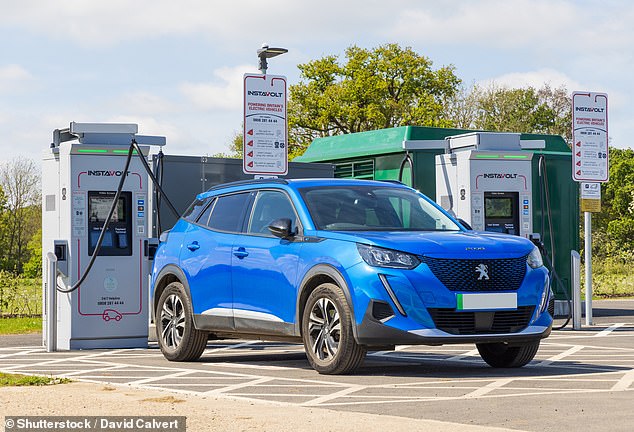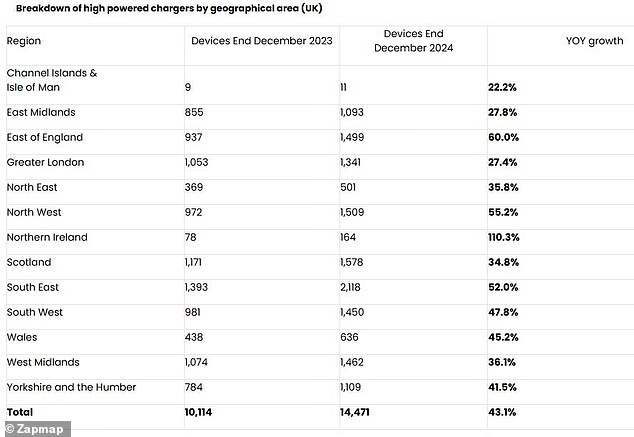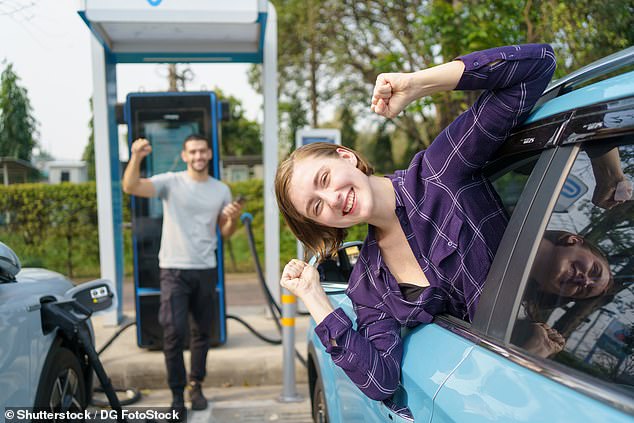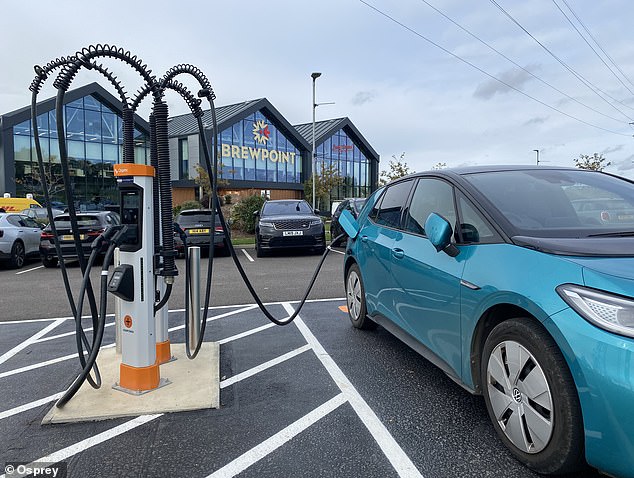Table of Contents
The UK’s electric vehicle charging infrastructure had a record year of growth in 2024, official figures have confirmed.
The number of charging points installed in the UK over the calendar year was the highest annual level ever recorded, with tens of thousands of new chargers added as government and industry push to ease charging anxiety among electric vehicle drivers.
The latest figures published by charge point mapping service ZapMap show that more than 20,000 new devices were installed over the past year, bringing the total number of public chargers to 73,699.
This represents a year-on-year increase of 38 percent.
Another piece of good news for EV drivers is that it is the faster types of devices that have seen particularly high growth; Ultra-fast devices (over 150 kW) have seen an 83 percent increase since the end of 2023, figures reveal.
News of the UK charging boom comes after the National Audit Office said the number of public charging points was on track to meet the Government’s target of 300,000 devices by 2030.
The number of charging points installed in the UK throughout 2024 was the highest annual level seen, with 20,000 new chargers added.
The growth of ultra-fast devices and charging centers designed for drivers looking to recharge their vehicle as quickly as possible on longer trips will particularly help reduce EV owners’ concerns about range and charging.
There are currently more than 7,000 devices over 150kW in Britain that can typically recharge an electric vehicle’s battery to between 10 and 80 per cent charge in just 15 to 30 minutes.
The figures show that there are now 14,000 50 kW fast chargers.
The number of 50 kW charging centers (six or more than 50 kW) also increased from 264 at the end of 2023 to 537 at the end of 2024.

Ultra-fast devices (150kW+) have seen an 83% increase since the end of 2023, with 7,000 150kW+ chargers now available nationwide.
London remains the focus for charger installations as other parts of the country are neglected.
Distribution across the UK is increasing and nine of the UK’s 12 geographic areas now have over 1,000 50KW+ chargers.
Although Wales and the North West remained less covered, they made good progress in 2024, unlike Northern Ireland, which continues to lag behind with just 78 new installations of high-power chargers last year and just 164 in total.
The network of destination chargers, which allow electric vehicle drivers to charge while stopped, continues to grow with an additional 12,000 chargers now available in destinations including restaurants, hotels, retail car parks and leisure centres.
However, the number of on-street chargers is not as complete a picture nationally, with most of the growth concentrated in London: 72 per cent of new on-street EV chargers were installed in the capital.

However, ZapMap notes that government-funded LEVI (Local Electric Vehicle Infrastructure) projects are starting to bear fruit, so there should be a more equitable distribution of on-street charging provision towards the end of 2025.
Melanie Shufflebotham, co-founder and COO of Zapmap, said: “Last year was another record year for charging infrastructure growth, with the installation of en-route charging points in particular ahead of growth in car sales. electric vehicles.
“As we approach 2025, we can expect to see the benefits of PCPR consumer regulations coming into effect combined with the impact of LEVI-funded projects reaching local authorities and providing more equitable access to consumer devices. burden”.
Rod Dennis, senior policy officer at RAC, said that while it is “positive” to see the availability of electric vehicle charging points is improving, concerns remain about the higher cost of using public devices compared to those that can Charge less through home chargers and your homes. duty.
‘There is still a huge price gap between public and home chargers, partly due to the higher VAT rate at public charging points (20 per cent) compared to the national rate of 5 per cent.
“Charging point installations and cheaper public charging costs are two sides of the same coin when it comes to increasing private demand for electric vehicles.”

Motorway services remain the most popular charging locations, showing that many people take long journeys in electric vehicles: 58% of respondents charge there
Is the UK on track to meet EV charging quotas?
The latest report from the National Audit Office (NAO) has found that to date, the number of charging points has increased in line with what is needed to meet the 2030 targets.
By 2030, the UK will need a minimum of 300,000 charging points and the NAO says this is “achievable”.
The installation of charging points is seen as a key way to meet the Government’s electric vehicle targets, which include a ban on all new petrol and diesel cars by 2030, and all new cars and vans sold being zero emissions at from 2035.
A key way to encourage drivers to use electric vehicles is to provide public charging points, which is why achieving these goals is so vital.
Although figures are currently on track, the NAO has warned that there is “more to do to ensure adequate coverage in all parts of the country” and that it is more expensive than necessary to install chargers due to planning permission and connections to the electrical network. .
How satisfied are EV drivers with the charging network?
A recent survey by ZapMap, the leading electric vehicle charging app, found that the public charging network is more important than ever.
Half of electric vehicle owners use public charging at least once a month, even when they have a home charger installed at their residence.
While the average satisfaction rating for the UK’s public charging network in ZapMap’s research was just 64 out of 100, Three in five respondents said public charge had improved in 2024.
Fifty-three percent of EV drivers said they will use charging centers (these are dedicated charging stations with multiple chargers and bays) in 2024, up from 47 percent in 2023.
However, motorway services remain the most popular charging locations, showing that many people take long journeys in electric vehicles, with 58 per cent of respondents charging there.

Some links in this article may be affiliate links. If you click on them, we may earn a small commission. That helps us fund This Is Money and keep it free to use. We do not write articles to promote products. We do not allow any commercial relationship to affect our editorial independence.


